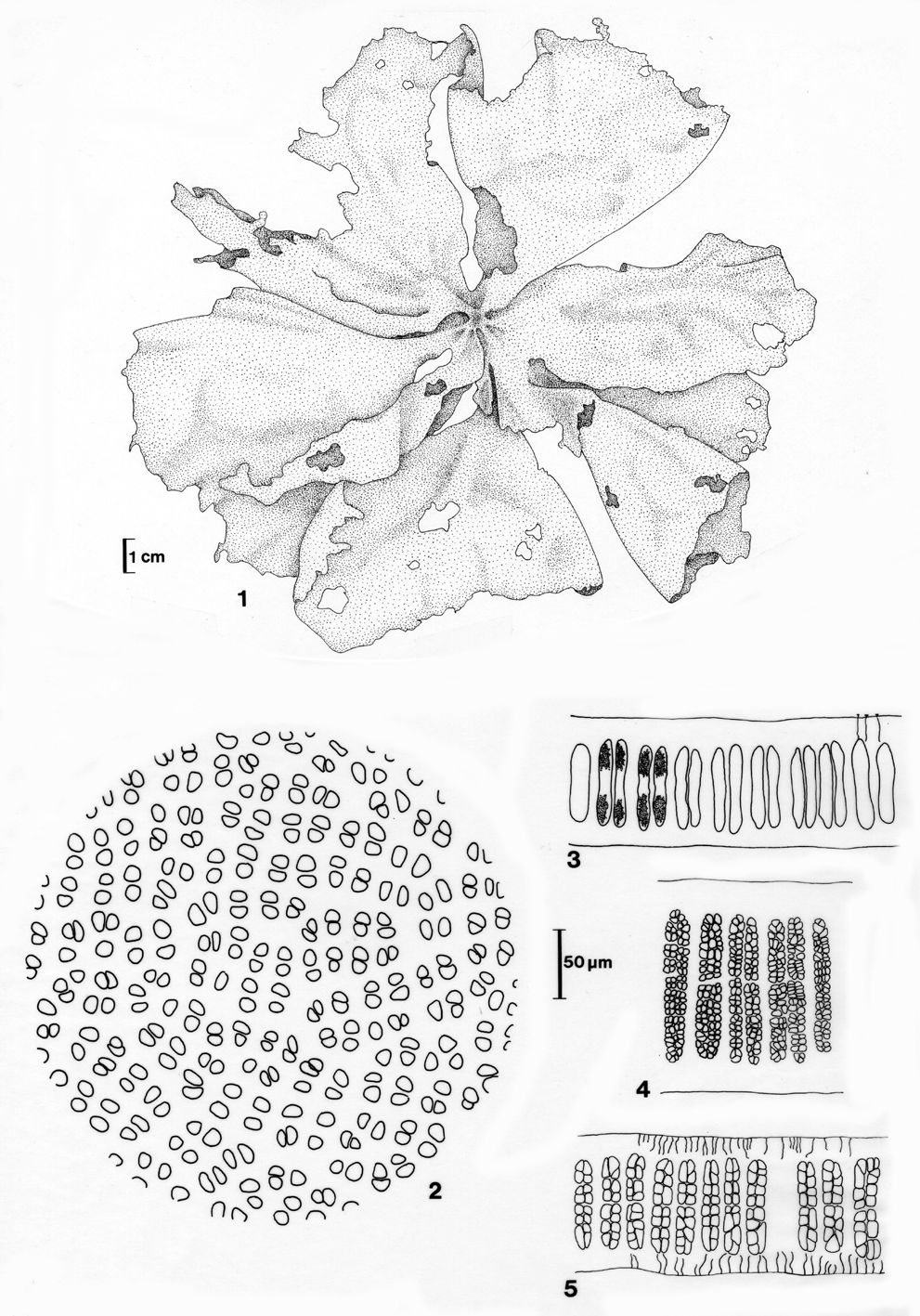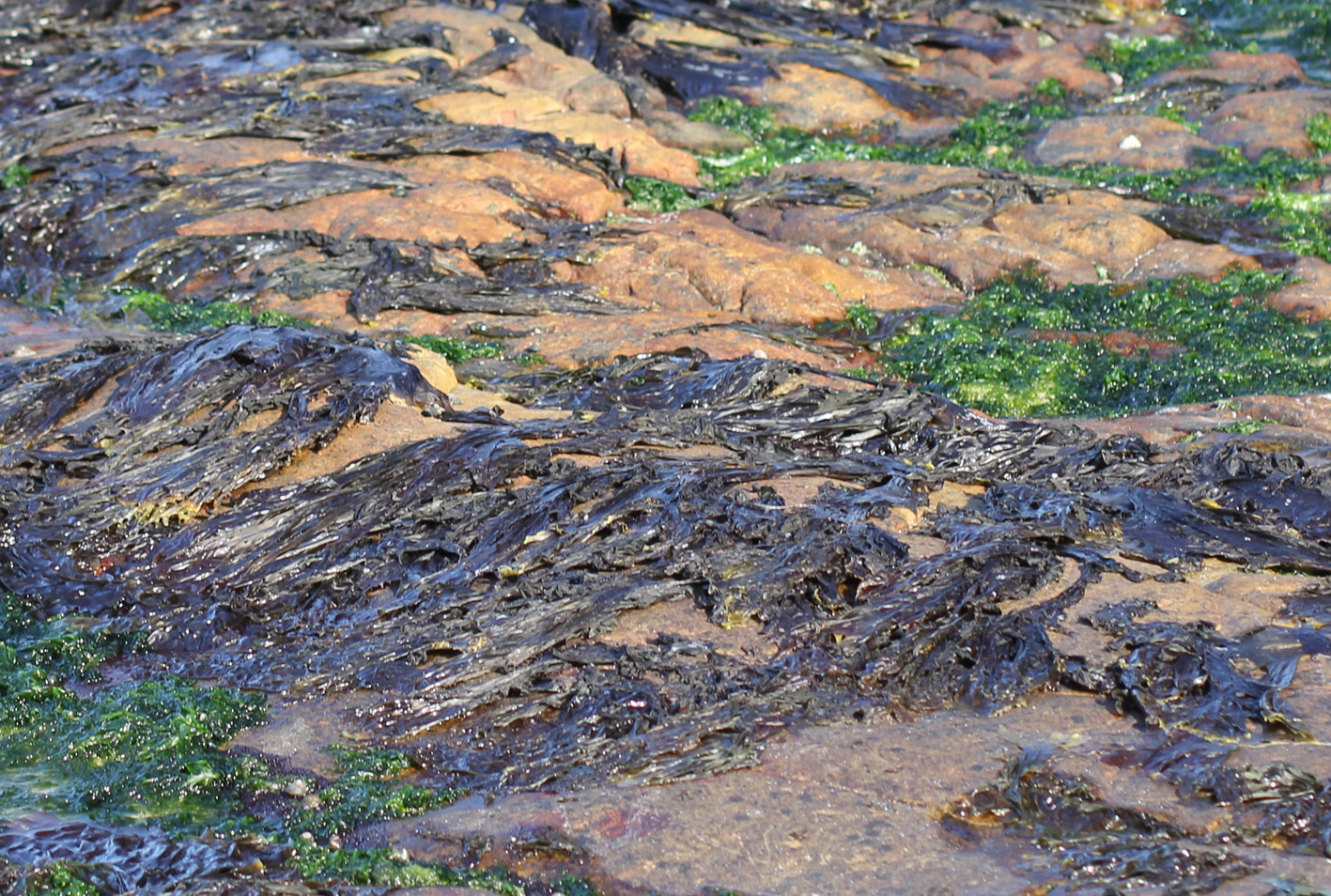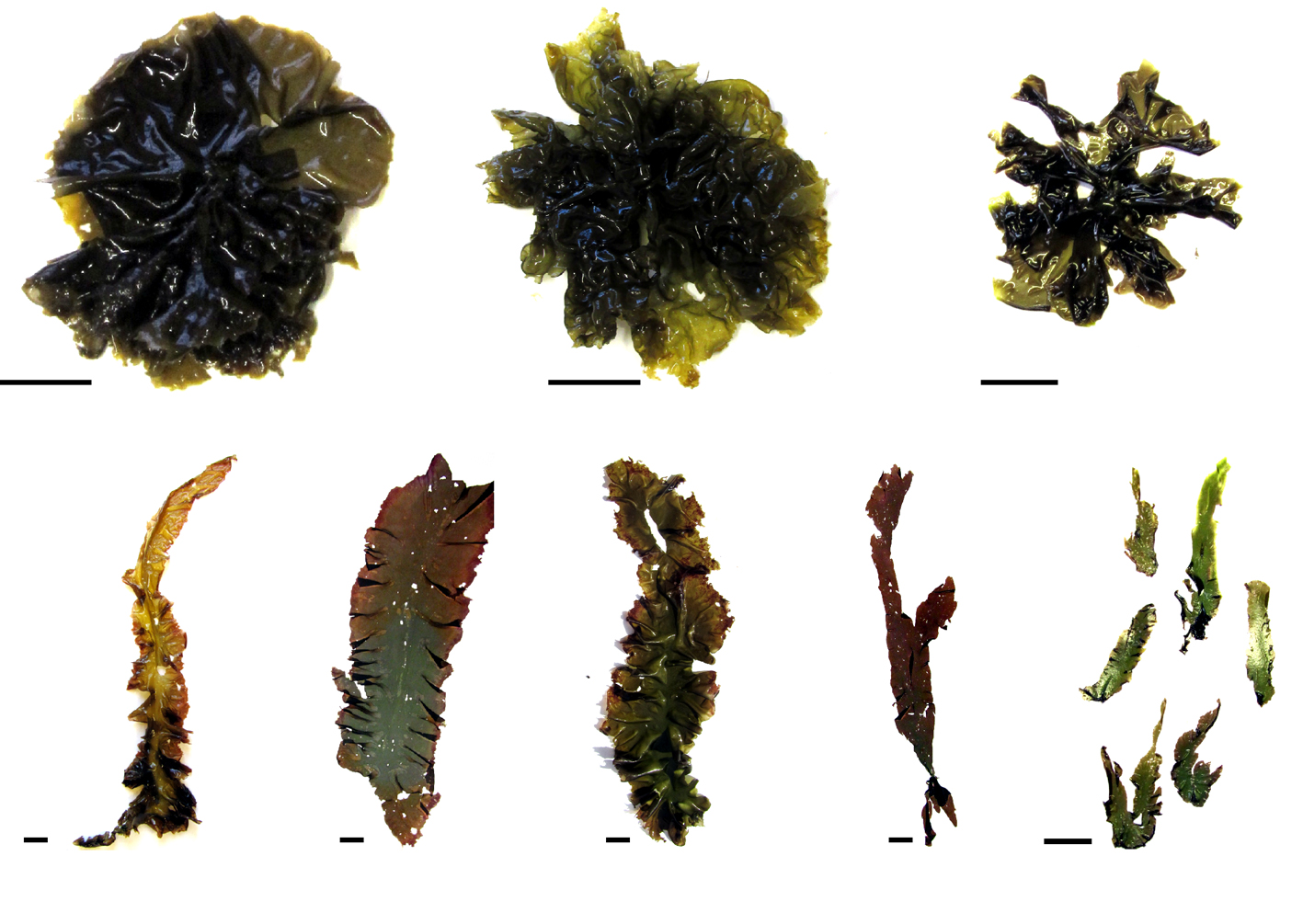Seaweeds of the South African South Coast


Order Bangiales
Family Bangiaceae
Porphyra capensis (P. capensis complex – see note)
Plants membranous, varying from light yellow through dark red /purple to almost black, varying in size from a few cm to a couple of meters. Thallus varying shape from orbicular to elongate; blade usually 100-150 µm thick. Cells in surface view rather irregularly arranged, rounded, 8-15 µm in diameter. Cells in cross section elongated, up to four times as long as broad, containing 1-2 stellate chloroplasts, each with a pyrenoid. Plants dioecious, with spermatangial areas visible around margins as pale or yellow band and carposporangial areas a darker red than vegetative areas. Reproductive cells a similar shape to vegetative cells. Mature spermatangia containing up to 24 tiers of spermatia; carposporangia containing about 32 carpospores in 8 tiers.
Collections, ecology and regional distribution
This complex is almost completely restricted to the west coast, with relatively few unequivocal records from the south coast: (Plettenberg, Knysa and Cape St. Francis). Usually in the mid to upper-eulittoral zones. Thalli high on the shore tend to become pale to yellow.
World distribution: recorded from other countries, but recent molecular work shows that there are in fact many species involved.
Type locality: Table Bay, Cape of Good Hope (Silva et al., 1996), but it is not known which of the many species in this complex the type represents (see note).
Note: The entity previously known as P. capensis Kützing 1843 has been shown to comprise multiple molecular species (Jones et al., 2004; Reddy et al., 2018) and the type cannot be unequivocally linked to any of them. The species-rich and genetically diverse P. capensis complex comprises eight morphologically cryptic and largely sympatric species along the west coast of South Africa (MM Reddy, pers. comm.)

Porphyra capensis (west coast specimens). 1. Habit of umbilicate plant. 2. Cellular arrangement (surface view). 3. Section of vegetative thallus. 4. Section of sprematangial area. 5. Section of carposporangial area. Illustrations from Stegenga et al. (1997).

Porphyra capensis (complex). Typical low-shore population on the west coast, among patches of the green Ulva sp. Photo M.M. Reddy.

Porphyra capensis (complex), showing the range of morphological variation among members of this species complex (west coast specimens). Scale bars = 25 mm. Illustration provided by M.M. Reddy.
References Porphyra capensis complex
Graves, J.M. 1969. The genus Porphyra on South African coasts: 1. Observations on the autecology of Porphyra capensis sensu Isaac (1957), including a description of dwarf plants. Journal of South African Botany 35: 343-362, 4 figs, 4 plates.
Isaac, W. E. 1957. The distribution, ecology and taxonomy of Porphyra on South African coasts. Proceedings of the Linnaean Society of London, 168: 6 1–65.
Jones, W.A., Griffin, N.J., Nelson, W.T, Farr, T.J. & Broom, J.E. 2004. Phylogenetic diversity in South African Porphyra (Bangiales, Rhodophyta) determined by nuclear SSU sequence analyses. European Journal of Phycology 39: 197-211.
Reddy, M.M., De Clerck, O., Anderson, R.J., Leliaert, F. & Bolton, J.J. 2018. A rosette by any other name: Species diversity in the Bangiales (Rhodophyta) along the South African coast. European Journal of Phycology, https://doi.org/10.1080/09670262.2017.1376256.
Silva, P.C., Basson, P.W. & Moe, R.L. 1996. Catalogue of the benthic marine algae of the Indian Ocean. University of California Publications in Botany 79: 1-1259.
Stegenga, H., Bolton, J.J. & Anderson, R.J. 1997. Seaweeds of the South African west coast. Contributions from the Bolus Herbarium 18: 655 pp.
Cite this record as:
Anderson RJ, Stegenga H, Bolton JJ. 2016. Seaweeds of the South African South Coast.
World Wide Web electronic publication, University of Cape Town, http://southafrseaweeds.uct.ac.za; Accessed on 07 January 2026.